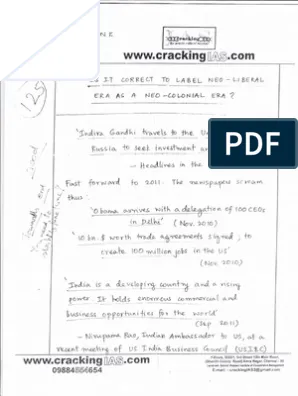- Home
- Prelims
- Mains
- Current Affairs
- Study Materials
- Test Series
India needs to revise its Consumer Price Index urgently
India''s Consumer Price Index (CPI) is a critical economic indicator used to measure changes in the price level of a basket of consumer goods and services, reflecting the impact of inflation on households. As of October 2025, India''s CPI reached 197.3 points (base year 2012=100), with inflation dropping to 0.25% according to provisional official estimates.
What is the Consumer Price Index (CPI)?
The CPI tracks the average change over time in the prices paid by urban and rural consumers for a selected basket of goods and services. This basket includes food, housing, apparel, transportation, and healthcare costs. The Ministry of Statistics and Programme Implementation (MOSPI) is responsible for compiling and publishing CPI data monthly in India.
Historical Evolution in India
- The origin of CPI in India dates back to the early 20th century, when rising prices following the First World War led to family budget surveys and the first indices for industrial workers.
- In the late 1950s, the Labour Bureau began compiling the index scientifically for industrial workers after comprehensive family living surveys, with further improvements in methodology and scope in subsequent decades.
- The current all-India CPI uses the base year 2012=100 and covers both rural and urban populations.
CPI Calculation
The Consumer Price Index (CPI) is calculated by comparing the total cost of a fixed basket of goods and services in the current year to the cost of that same basket in a chosen base year, then multiplying by 100.
Steps Involved in CPI Calculation
- Define the basket of goods and services that represents typical consumer purchases.
- Collect prices for each of these items regularly from various locations across the country.
- Assign weights to each item based on its share in the average household expenditure, reflecting its importance.
- Calculate the total cost of the market basket in the base year and the current year.
- Use the formula:

This shows how prices have changed over time. If the cost of the basket increases from the base year to the current year, the CPI rises, indicating inflation.
Calculation Example
Suppose the market basket cost ₹5,00,000 in the base year and ₹5,50,000 in the current year:
 This means prices have increased by 10% compared to the base year.
This means prices have increased by 10% compared to the base year.
Methodology in India
- Price data are collected from selected markets and villages by official agencies.
- Weights and items are updated periodically, and price trends are aggregated from local to national levels using a Laspeyres-type index formula (fixed basket, fixed weights).
- The index is prepared separately for rural, urban, and combined sectors.
This approach ensures that the CPI accurately reflects consumer expenditure patterns and price changes across India.
CPI Data and Trends
- CPI values have shown a general upward trend over the past decade, indicating sustained inflationary pressures.
- The index rose from 142.10 points on average between 2011 and 2025, reaching an all-time high of 197.3 points in October 2025.
- Recent data shows monthly indices for 2025 began at 193.5 in January and climbed to 197.3 in October, reflecting moderate but persistent inflation.
Significance for Governance
- The CPI is vital for monetary policy decisions by the Reserve Bank of India (RBI), wage adjustments, and for government programs targeting subsidies or welfare schemes.
- CPI is also linked to the determination of dearness allowance for government employees and the cost-of-living adjustment for social security and pensions.
- Its accurate and timely computation ensures trust in macroeconomic decision-making and helps identify sectors experiencing high inflation.
Challenges and Updates
- The CPI is periodically revised to better reflect evolving consumer habits and economic conditions, with basket weights and base years updated for accuracy.
- Distortions can occur if the index does not adequately capture price changes in the informal sector, which represents a large share of the Indian workforce.
- The latest recalibrations and data releases indicate sustained efforts to ensure up-to-date and relevant CPI calculations, particularly as India navigates post-pandemic economic shifts.
|
Year |
CPI (Oct) |
Annual CPI Avg |
Inflation Rate (Oct) |
|
2025 |
197.3 |
— |
0.25% |
|
2024 |
196.8 |
190.9 |
— |
|
2023 |
185.3 |
181.9 |
— |
Issues with Current CPI
- Base Year Problem: CPI still uses 2012 as the base year, which no longer reflects current consumption patterns.
- Skewed Weightages: Categories like food and beverages hold nearly 46% weight, disproportionately affecting overall inflation readings.
- Statistical Anomaly: October 2025 CPI showed 0.25% inflation, the lowest since 2012. But this was due to a high base effect from October 2024’s 9.7% food inflation—not actual price drops.
- Misleading Signals: Despite rising vegetable prices, CPI showed negative food inflation, masking real consumer experiences.
Sectoral Insights
- Food and Beverages: Showed a 3.7% price fall due to base effect, not actual deflation.
- Other Categories: Fuel, housing, tobacco, and miscellaneous items saw higher inflation than last year.
- GST Impact: Rate cuts reflected only in clothing and footwear, not across broader consumption.
Perception vs Reality
- RBI’s September survey found perceived inflation at 7.4%, far above the official CPI figure.
- This disconnect undermines public trust and complicates policy decisions.
Policy Implications
- RBI’s Monetary Policy Committee (MPC) relies on CPI for rate decisions.
- With growth data clouded by GST-related demand boosts and CPI anomalies, policy calibration becomes difficult.
- The Ministry of Statistics and Programme Implementation plans to release a new CPI series by Q1 of the next financial year.
India’s Consumer Price Index (CPI) is currently misaligned with real-world consumption and price dynamics due to its outdated base year and skewed weightages. This has led to distorted inflation readings, which risk misguiding monetary policy decisions and eroding public trust.
- Statistical reforms are critical to ensure CPI reflects actual consumer experiences.
- Timely revision of the CPI basket and methodology is essential for accurate inflation tracking.
- Policy credibility depends on reliable data—especially when inflation perception diverges from official figures.
In short, the CPI must be urgently updated to serve as a trustworthy anchor for economic policymaking and public confidence.









 Latest News
Latest News
 General Studies
General Studies